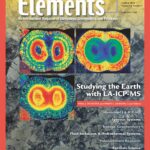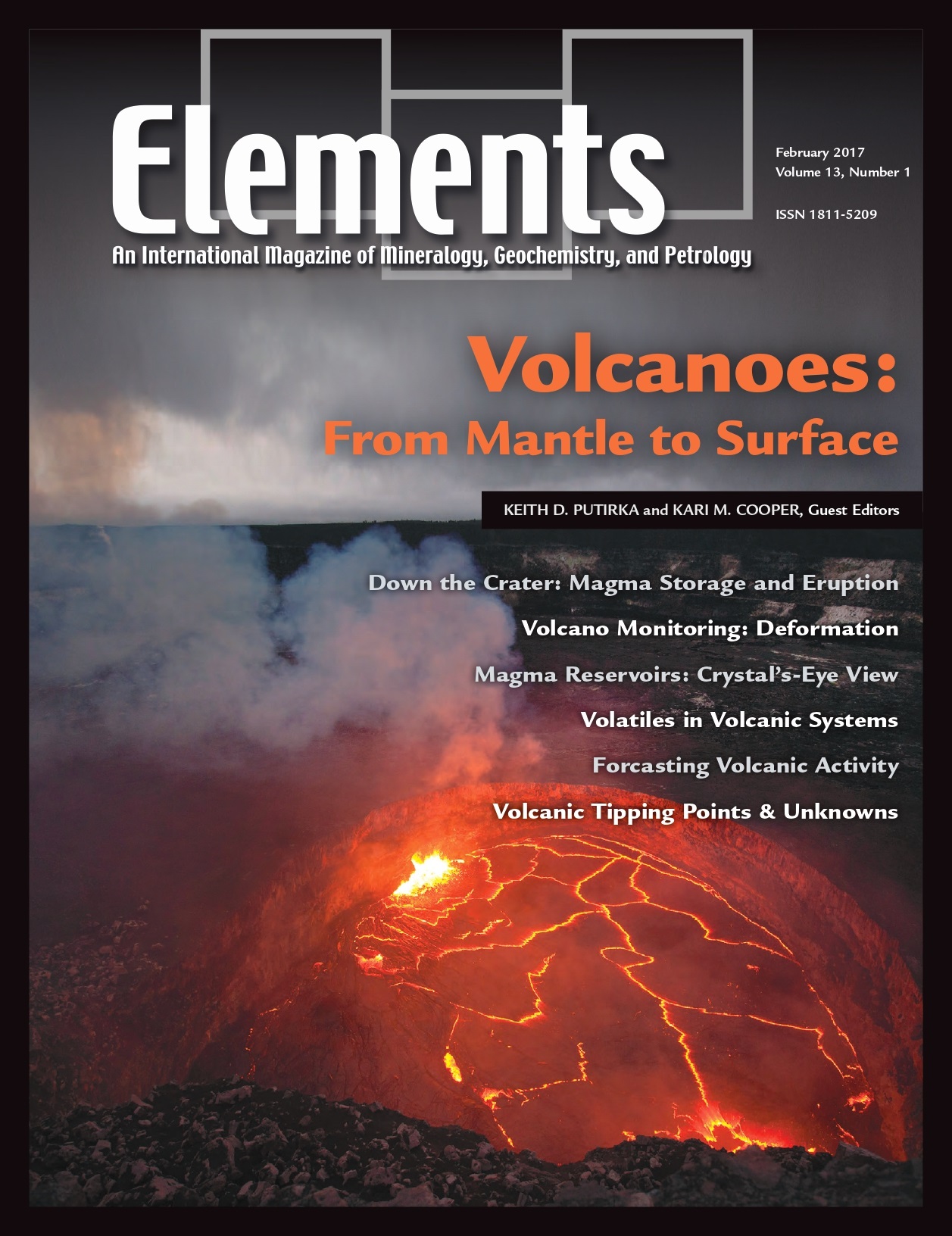
Studying The Earth Using La-ICPMS, October 2016, Vol. 12, No. 5
June 28, 2024
Mineral Resources And Sustainable Development, October 2017, Vol. 13, No. 5
June 28, 2024Volcanoes: From Mantle To Surface, February 2017, Vol. 13, No. 1
$20.00
Volcanoes have played a large role over Earth’s history in building the crust, contributing to atmospheric formation, and transferring heat and mass from the interior to the surface. They are also capable of massive disruption of the surface environment and to human civilizations.
Volcanoes: From Mantle To Surface
February 2017, Vol. 13, No. 1
Volcanoes have played a large role over Earth’s history in building the crust, contributing to atmospheric formation, and transferring heat and mass from the interior to the surface. They are also capable of massive disruption of the surface environment and to human civilizations. Volcanoes themselves are the products of crustal-scale systems. But what controls whether a given magma will erupt or stall, and how do processes in one part of the system affect others? Volcano science is advancing rapidly, and improvements in monitoring tools, petrologic tools, and modeling of volcanic processes have greatly improved our understanding of volcanic behavior. This issue brings together contributions exploring volcanic behavior throughout the crustal system.
Why You’ll Love Elements Magazine:
- Expert Contributors: Articles written by renowned researchers in the field of geoscience.
- Engaging Content: Join a community of readers who are passionate about Elements.
- Exceptional Quality: Each issue is printed on high-quality paper with stunning visuals and detailed illustrations that bring complex scientific concepts to life.
Order your copy of the February 2017 issue of Elements magazine today and delve into volcanoes: from mantle to surface.
Related products
-
Fluids in Planetary Systems, January 2005, Vol. 1, No. 1
$20.00Water and other geofluids play an important role in the geochemical and rheological evolution of the Earth and other bodies in the solar system. These fluids are responsible for the formation of hydrothermal mineral deposits, affect eruption behavior in volcanic systems and the geophysical properties of the mantle, and significantly affect the way in which rocks deform and fracture.
-
Frontiers In Textural And Microgeochemical Analysis, August 2007, Vol. 3, No. 4
$20.00Recent advances have been made in high-resolution in situ methods to image mineral growth patterns, analyse compositional and isotopic zonation, and improve our ability to visualize, study, and model rock textures in three dimensions. These advances provide a significant step forward in the understanding of how rocks form and the history they can tell us.
-
Phosphates And Global Sustainability, April 2008, Vol. 4, No. 2
$20.00Phosphorus is a unique element: it is essential to the existence of all living forms, and as such controls biological productivity in many terrestrial and marine environments; but when in excess, it leads to uncontrollable biological growth and water-quality problems. This has become a common environmental issue, resulting from our careless use of phosphorus in agriculture, yet phosphate ore deposits, from which fertilizers are produced, are a finite natural resource.




